Riding mower and tractor common questions
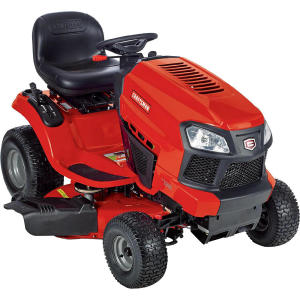

These common questions about riding mowers and tractors are the ones our experts hear the most often from our customers. You might also find the help you need by checking the common symptoms and solutions for riding mowers and tractors. When you’re ready to make a repair, search your model number to find replacement parts. Sears PartsDirect has the part you need, no matter where you bought your riding mower or tractor.
Why does my riding mower shut off when I engage the blades?
A disconnected or defective seat switch often causes the riding lawn mower to shut down when you engage the blades. Check the wiring connections and the condition of the seat switch. If the seat switch is okay, you could have a defective brake switch or a wire harness failure. If the brake switch is okay, check all the safety switches and wire harness connections.
Where can I find parts for my riding lawn mower engine?
The engine parts are often listed separately from the other riding mower parts. To find engine parts for an engine, search Sears PartsDirect for the engine’s model number. Here are two ways to find the model number on your engine:
Check the side or back of the engine.
Search Sears PartsDirect for the riding mower’s model number. The parts list will include the replacement engine. Its part number is the same as its model number.
What attachments fit my riding lawn mower?
The manufacturer provides an attachment fit-up chart that shows which attachments fit your riding lawn mower. Refer to the fit-up chart for your specific brand of riding lawn mower to determine which attachments are available for your model.
Can I use E85 (ethanol) fuel in my riding lawn mower?
Most riding lawn mower engines cannot use E85 fuel, which is 85 percent ethanol and 15 percent gasoline. Many riding lawn mowers can only use unleaded gasoline with up to 10 percent ethanol (E10). Check your owner’s manual for fuel specifications.
Why is my riding lawn mower cutting the grass unevenly?
Uneven tire air pressure is a frequent cause of an uneven cut. Check the air pressure of all 4 tires and adjust the air pressure if necessary. Level the mower deck if it’s uneven. Dull blades can also cause an uneven cut. Replace the blades if they are dull or damaged.
Why is my riding lawn mower moving sluggishly?
If your mower is slow, check the ground drive belt and replace it if it’s damaged or broken.
If your riding lawn mower has an automatic transaxle, you might need to purge air from the transaxle case—air bubbles can form in automatic transaxle oil when the riding lawn mower is driven over rough terrain. Follow the procedure in your owner’s manual to purge air from the automatic transaxle.
Why won’t the blades engage on my riding lawn mower?
A worn or damaged mower deck drive belt, also called a blade drive belt, prevents the blades from engaging. Replace the blade drive belt if it’s damaged or broken.
If the blade drive belt is okay, check the mower deck components such as pulleys, cables and springs and replace any defective mower deck components.
Why does my riding lawn mower backfire when it shuts off?
The mower engine backfires if too much fuel goes into the engine when it’s hot and you turn off the ignition switch. The heat of the engine ignites the remaining fuel in the cylinder and causes a backfire.
To prevent backfiring, move the throttle to the lowest position and allow the engine to idle for 1 minute before shutting the riding mower off.
Why does my riding mower engine run for a while and then stop?
If your riding lawn mower runs and then stops, check whether it’s low on fuel.
A blocked vent on the gas tank cap could also cause the engine to stop. Loosen the gas cap—but don’t remove it completely—so air can flow into the gas tank. Start the engine and see if it continues to run. If so, clean or replace the gas cap.
A dirty fuel filter or clogged carburetor could also cause the engine to die. Rebuild the carburetor if it’s gummed up.
Why does the mower deck vibrate on my riding lawn mower?
A bent or damaged mower blade can cause vibration in the mower deck. Replace blades that are bent or damaged.
Check for loose blades and pulleys. Tighten bolts and fasteners on the mower deck if necessary. A worn or damaged mower deck drive belt will also cause vibration in the mower deck. Replace the mower deck drive belt if it’s damaged.
Why does my riding lawn mower engine run rough?
Stale fuel can make the engine run rough. Empty the fuel tank and refill it with fresh gasoline. If that doesn’t help, check for dirty air and fuel filters.
You could have a gummed up carburetor if the filters are dirty or the gas is old. Rebuild the carburetor if necessary.
A fouled spark plug will also cause the engine to run rough. Replace the spark plug if it’s damaged.
Why does the Kohler 7000 Series engine on my Craftsman Zero-Turn riding mower stall?
On some Kohler 7000 Series engines powering Craftsman Zero-Turn mowers, air in the evaporator line between the fuel tank and carburetor interrupts fuel flow through the carburetor, stalling the engine. A service technician will need to connect a vent line between the evaporator line and air filter housing to prevent stalling.
Why doesn't my lawn tractor start sometimes?
A lawn tractor typically has several interlock switches, such as the seat switch and brake switch, that can intermittently prevent the engine from starting. Check the wiring connections on the interlock switches because loose wires can cause intermittent starting problems. If you detect side-to-side play in the brake pedal, the brake arm may not be making contact with the brake interlock switch. Side-to-side play in the brake arm is a common cause for intermittent starting problems on some tractors. Tighten the brake arm to eliminate side-to-side play if you find that a loose brake arm prevents the engine from starting.
Most common symptoms to help you fix your riding mowers & tractors
Choose a symptom to see related riding mower and lawn tractor repairs.
Main causes: faulty battery, bad alternator…
Main causes: damaged cutting blade, worn deck pulley, damaged mandrel pulley, loose fasteners on mower deck components…
Main causes: damaged tie rods, bent or worn wheel spindle, worn front axle, damaged sector gear assembly…
Main causes: worn or broken blade belt, broken belt idler pulley, blade clutch cable failure, bad PTO switch, damaged ma…
Main causes: punctured tire or inner tube, leaky valve stem, damaged wheel rim…
Main causes: engine overfilled with oil, leaky head gasket or sump gasket, damaged carburetor seals, cracked fuel pump, …
Main causes: clogged carburetor, damaged flywheel key, dirty spark plug, stale fuel, improper valve lash, engine needs a…
Main causes: shift lever needs adjustment, neutral control needs adjustment…
Main causes: worn or broken ground drive belt, bad seat switch, transaxle freewheel control engaged, transaxle failure, …
Most common repair guides to help fix your riding mowers & tractors
These step-by-step repair guides will help you safely fix what’s broken on your riding mower or lawn tractor.
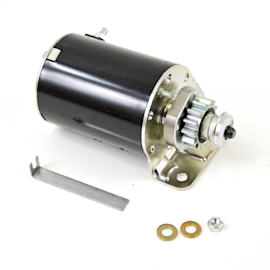
How to replace the starter motor on a riding lawn mower
If you hear the solenoid click but don’t hear the starter motor spin when you turn the key, follow these steps to replac…
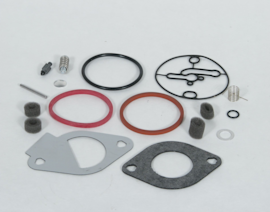
How to rebuild a riding lawn mower carburetor
Get your sputtering carburetor running smoothly in 60 minutes.…
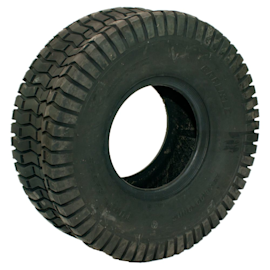
How to replace a riding lawn mower rear tire
Your mower can’t run on a damaged rear tire. Here’s how to install a new one.…
Effective articles & videos to help repair your riding mowers & tractors
Use the advice and tips in these articles and videos to get the most out of your riding mower or lawn tractor.

Learn about all the convenient features on our Sears PartsDirect website that make your parts purchases easier.…

Get answers to frequently asked questions about Sears and Sears PartsDirect.…
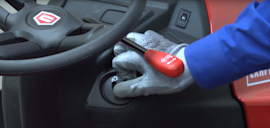
Check the starter solenoid, starter motor, wiring, battery and engine.…